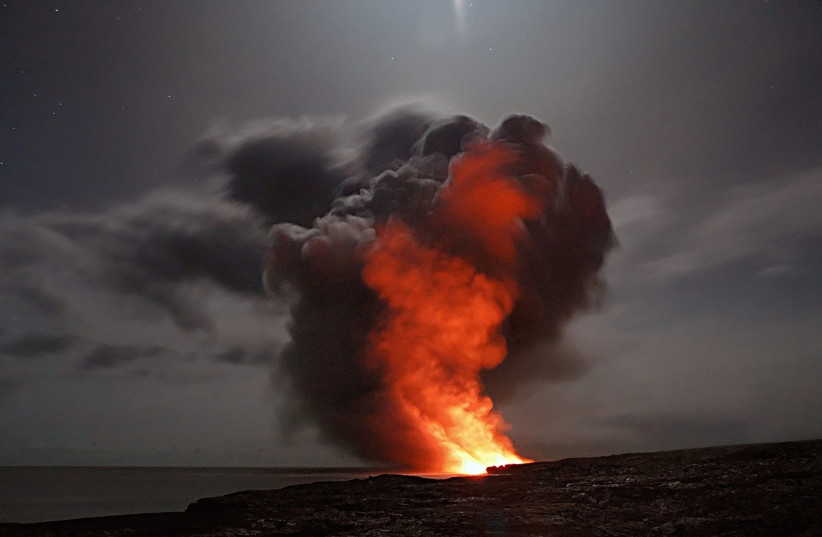Volcanoes are among the most important – and destructive – natural phenomena on Earth. Eruptions spew hot lava, causing destruction and disaster, but they are also responsible for the creation of islands. But despite being associated with heat and lava, the hotspots underneath the Earth's crust may be surprisingly cool.
According to a new study, the findings of which were published in the peer-reviewed academic journal Science, our very understanding of how some volcanoes form may be far too simple to accurately understand what's happening.
A volcano, to put it simply, is the term referring to the rupture in a planet's crust that is connected to the magma chamber. This connection allows volcanic ash, gases and lava to escape.
The typical image of a volcano in popular culture is of a large mountain, capped by a hole on the top from where lava and ash erupt. Some of these are minor, some are even extinct. Others are massive and cause severe destruction and catastrophe when they erupt, possibly even on a continental scale.
However, these represent a minority of volcanoes: The majority of them are actually underwater.

Typically, these volcanoes are found around the border of tectonic plates when they clash with each other on top of the mantle layer.
But not all volcanoes are like this. Some, rather than forming along the tectonic plate borders, just erupt from the middle of them.
So why does this happen?
Researchers thought that these hotspots were made by mantle plumes, which are pillars of hot rock searing through material like a blowtorch as it rises. This, in turn, would create a volcano as tectonic plates move over them.
Such a process is essential in the formation of islands like Hawaii and Iceland, which were both formed by many volcanic eruptions.
Naturally, it had long been assumed that these hotspots were incredibly hot due to the magma plumes. This lined up with the previous research, which had indicated that these hotspots were around 100°C-300°C hotter than the ridges where magma rises underwater as tectonic plates spread.
Indeed, this may very well also be the case with many of these volcanoes, which supports the view that hotter mantle rocks heated up the hotspots and cooler mantle rocks heated up the ridges.
But the study has changed our assumptions about this, finding that many of these hotspots were not as hot as expected, but were significantly cooler.
THESE HOTSPOTS, which made up around 40% of all the hotspots in question, were only 50°C-136°C hotter than the ridges. Furthermore, 15% were just 36°C hotter or less.
This presents a significant problem, as this cooler temperature means that there isn't enough buoyancy to support the hot mantle rock heading up through the plume.
It's not very clear what's going on here, so the team behind this study did some investigating.
The team focused on the presence of helium, specifically the ratio of helium-3 to helium-4. The two variations are notably different from one another and likely have different sources.
Most helium found in the Earth's crust is helium-4, which is formed when uranium and other radioactive isotopes break down over time. By contrast, helium-3 is found far deeper and is likely formed from the reservoirs of ancient material.
It was the hotter hotspots that were found to have a higher ratio of helium-3 to helium-4 than the cooler ones.
This means that one possible origin of these cooler hotspots is exclusively from the upper mantle, rather than deep in the Earth. But it is also possible that, rather than exclusively coming from the upper mantle, they might still be from deeper magma plumes that cooled down by mantle rock or by moving slowly.
So what, then, are these cooler hotspots? And are they even volcanoes?
Maybe not.
According to University of New Mexico seismologist Ross Maguire, who was not part of the study, "the term 'hotspot' is misleading," and volcanoes that "don't fit the plate tectonic paradigm" should instead be called "melting anomalies."
But regardless of what they should be called, one thing is clear: Our understanding of volcanoes and their origins is still far from complete.
"Perhaps the truth is that only a few hotspots truly behave like our classical model of mantle plumes and hotspots," UCLA geodynamicist Carolina Lithgow-Bertelloni, who was a co-author of the study, said in a statement.
These findings raise new questions for scientists on how this phenomenon, that is still so very common throughout the world, originates. But they won't be easy to answer. And in the future, according to Lithgow-Bertelloni, scientists might need to analyze every hotspot to better understand them.
